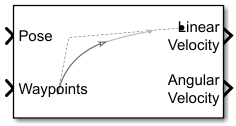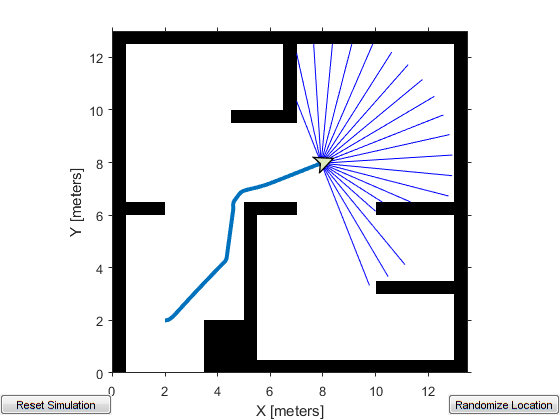Pure Pursuit
Linear and angular velocity control commands
Libraries:
Robotics System Toolbox /
Mobile Robot Algorithms
Navigation Toolbox /
Control Algorithms
Description
The Pure Pursuit block computes linear and angular velocity commands for following a path using a set of waypoints and the current pose of a car-like or differential-drive vehicle. The block takes updated poses to update velocity commands for the vehicle to follow a path along a desired set of waypoints. Use the Max angular velocity and Desired linear velocity parameters to update the velocities based on the performance of the vehicle.
The look-ahead distance port and parameter compute a look-ahead point on the path, which is an instantaneous local goal for the vehicle. The angular velocity command is computed based on this point. Changing the look-ahead distance has a significant impact on the performance of the algorithm. A higher look-ahead distance results in a smoother trajectory for the vehicle, but can cause the vehicle to cut corners along the path. Too low of a look-ahead distance can result in oscillations in tracking the path, causing unstable behavior. For more information on the pure pursuit algorithm, see Pure Pursuit Controller.

